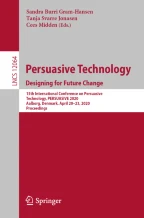
This paper provides a systematic review of mobile apps for waste management with the main aim of uncovering the persuasive strategies employed, their operationalizations, the relationship between the number of persuasive strategies employed and the apps’ effectiveness to achieve specific target behavior. Specifically, we systematically investigated 125 mobile apps for waste management and identified distinct persuasive strategies, from the primary task support category of the PSD model. Furthermore, we classified these strategies based on the kind of waste management activities that the app was designed to support. Secondly, we uncovered how each of the persuasive strategies was implemented in the waste management apps to achieve the targeted outcome. Thirdly, we evaluated the relationship between the number of persuasive strategies employed in the apps design and the effectiveness of the apps (measured by user ratings). The results show that the apps cumulatively employed 251 persuasive strategies spread across the seven distinct primary task support persuasive strategies as follows: reduction (n = 76), tunneling (n = 9), tailoring (n = 37), personalization (n = 75), self-monitoring (n = 31), simulation (n = 7) and rehearsal (n = 16). In addition, our findings show that appropriate waste disposal, collection, recycling, and general waste management challenges were some of the waste management issues that the mobile apps targeted. Based on our results, we offer some design recommendations for operationalizing persuasive strategies in waste management app to increase their effectiveness.
This is a preview of subscription content, log in via an institution to check access.